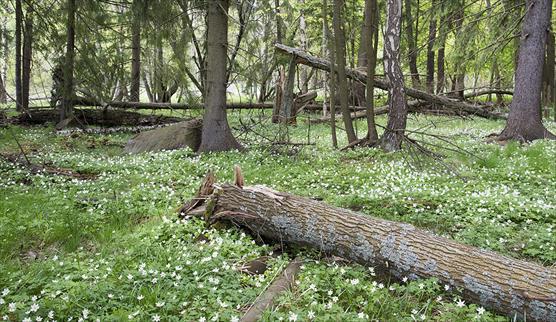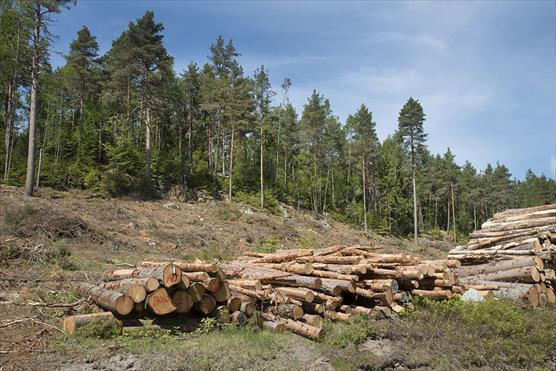The IBC-Carbon-project has now ended. Warm thanks to all our collaborators.
In a changing climate there are growing pressures towards the use of forest resources both globally and in Finland. Finland has large forest resources (covering about 70% of the country; 60% of the forested area is owned by private forest owners) and highly developed forest industry. The Finnish Bioeconomy Strategy (2014) aims at enhancing sustainable bioeconomy solutions. The goal is to increase the use of wood for different products and renewable energy to about 80 million m3 of stemwood annually, up from about 65 million m3 annually in 2013. Such a wide-scale intensification of biomass removals from forests has raised concerns about harmful environmental side-effects and climate change mitigation potential of these activities. Therefore, there is an urgent need for integrative research and planning to identify feasible options for securing forest biodiversity, important ecosystem services and sustainable forest use in Finland.

Photo Riku Lumiaro.
To support decision making, we need information on the location and quality of forests that simultaneously host rich biodiversity and mitigate climate change. We can start by evaluating the carbon budgets of forests that are rich in deadwood and thus host important structures for threatened forest species. We can then move into analyzing the capacity of these forests in buffering waterbodies from carbon and nutrient leakages.
In the Integrated Biodiversity Conservation and Carbon Sequestration in the Changing Environment (IBC-Carbon) project we will, based on diverse data and modelling, identify forests that are valuable in multiple ways. We will provide decision-supporting tools on how to optimally manage these valuable forests in a changing climate and how to secure their connectivity.
Moreover, we will develop voluntary monetary compensation mechanism for forest owners to increase their incentives to secure multiple forest values. We aim to provide concrete suggestions 1) for the compensation scheme that is ecologically and economically feasible as well as socially accepted in Finland and 2) for adapting the mechanism to the Finnish forestry framework.
Seven work packages and six years of project cycle
The six-year-long project consists of seven work packages (WPs). Each WP has its own page with more detailed information (see below). WPs 1, 2 and 3 will provide information on forest growth modelling, forest biodiversity, carbon budget and other ecosystem services.
In the WP 4 the aim is to develop Earth Observation techniques and produce remotely sensed indicators of biodiversity variables and variables for carbon sequestration and forest radiation studies. Overall, the research is co-produced together with stakeholders and results on different adaptation options, sustainable choices and their preconditions will be widely communicated both in Finnish and in English.

Photo Riku Lumiaro
WP 5 concentrates on developing monetary compensation mechanism for forest owners to increase incentives for more sustainable forest use in Finland. In WP 6, data produced in other WPs is integrated into spatial conservation prioritization analyses that can inform land use planning processes. Spatial prioritization software and computing tool Zonation will play a major role in WP 6. Finally, WP 7 ensures that stakeholders interested in the project can participate into the research and that the results are user-friendly and can be adopted by the decision makers, forest owners and other stakeholders.
-
Modelling forest growth, carbon sequestration and radiative forcing
-
Biodiversity modelling and conservation
-
Forest catchment ecosystem services and sustainability indicators
-
Improved Earth Observation techniques
-
Voluntary monetary compensation mechanism for forest owners
-
Integrated adaptive conservation and land-use planning for sustainable forestry
-
Co-production of knowledge and practical solutions together with stakeholders
Strategic Research Council (SRC) funds the project that aims to secure valuable forest areas and enhance sustainability of the Finnish forestry and bioeconomy in a changing climate. The first funding period was for years 2018–2020, after which an interim evaluation was made and the second three-year-long funding has been granted for years 2021–2023.
The IBC-Carbon project involves researchers from the University of Eastern Finland and the University of Helsinki (incl. Finnish Museum of Natural History), and it is coordinated by the Finnish Environment Institute SYKE.
IBC-Carbon pages